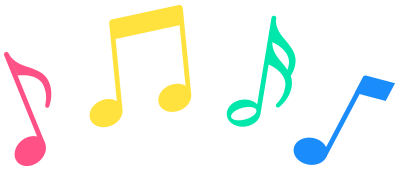Developing your “ear” for music is a fundamental part of becoming a confident musician & songwriter. Still, it can also be challenging to understand precisely where to start. By practicing more complex brain games incrementally, we can gain a deeper awareness when listening, songwriting, and performing. This is lesson two of three. Here, I will provide examples of musicians honing their passion for new music to master advanced music skills. At My Music Bridge, we encourage early and sophisticated music learners to find the sound that moves them. A love for what you play is at the heart of inspired learning. Pick songs that inspire you to not give up on practicing. Is there an artist or composer who motivated you to pick your instrument? Does your favorite solo have a passage you love but can’t play?
j., Improv Pianist
“When I first began learning piano, I struggled to learn by sightreading sheet music. I wanted to master songs I heard in movies, compositions that explored left-right hand independence, but I felt so far away from getting it right. There are many ways to pick up piano basics. Still, instead of learning from the beginner books I got from the pianist at my church, I leaped headlong into learning by watching, listening, and repeating hand movements. Some of you may know ‘piano roll’ videos that provide another way of notating music [if you don’t know, definitely check piano rolls out].”
Not all instrumentalists learn music best by reading notes on the staff. There are other approaches to learning & creating music notation. For example, piano rolls light up the key on the piano that needs playing as it cycles through the song, guitarists have music notation that indicates finger placement on the strings, and so on.
“Years before piano rolls became more accessible, I watched videos made by a kind, retired math professor named Jane. She created videos playing through Once Upon A December from Anastasia, recorded on her antique upright piano with an overhead camera. As if I were peering over her piano, I watched her hands lined up with the keys, and I echoed those movements with my hands, very slowly at first. I used a learning technique I didn’t have the words for at the time, but I learned later that people have something called ‘mirror neurons.’ Because I found this way of learning through mirroring to be such a valuable skill for musicians, I wrote another post about mirror neurons that you can check out here!”
Sticking with a song for a while provides a way to track progress as you continue to practice. Music may have more than one lesson for those who maintain a passion for playing and experimenting with new ideas.
Joe, Guitarist
“When I first began learning guitar, my biggest hurdle was finding music that excited me and pushed my skills. Without a guitar teacher, I started to pick up Falling Slowly from Once, first as simple practice in 4 chord strumming. Still, as I mastered each new part in the music, I messed with picking and echoing the melody rather than just playing the root chords. The song had so many lessons to teach and room for me to play around with new skills, such as adding little riffs and fills that were not in the original song.”
Picking moments in the music to improvise or riff on the melody — making a song your own — is an advanced skill that even early musicians should practice. After you’ve taken the time to learn a song inside and out, artistic choices are easier to make. They feel more intentional, more thought-out.
“Because I had a strong emotional attachment to the music, it motivated me to learn how to express myself and not just plunk away the notes on the page. Once I felt comfortable embodying the song’s meaning, I practiced the same skill with other songs. To this day, though, I play Falling Slowly as my warm-up before practice. Maybe you’ll find that song that sticks with you.”




